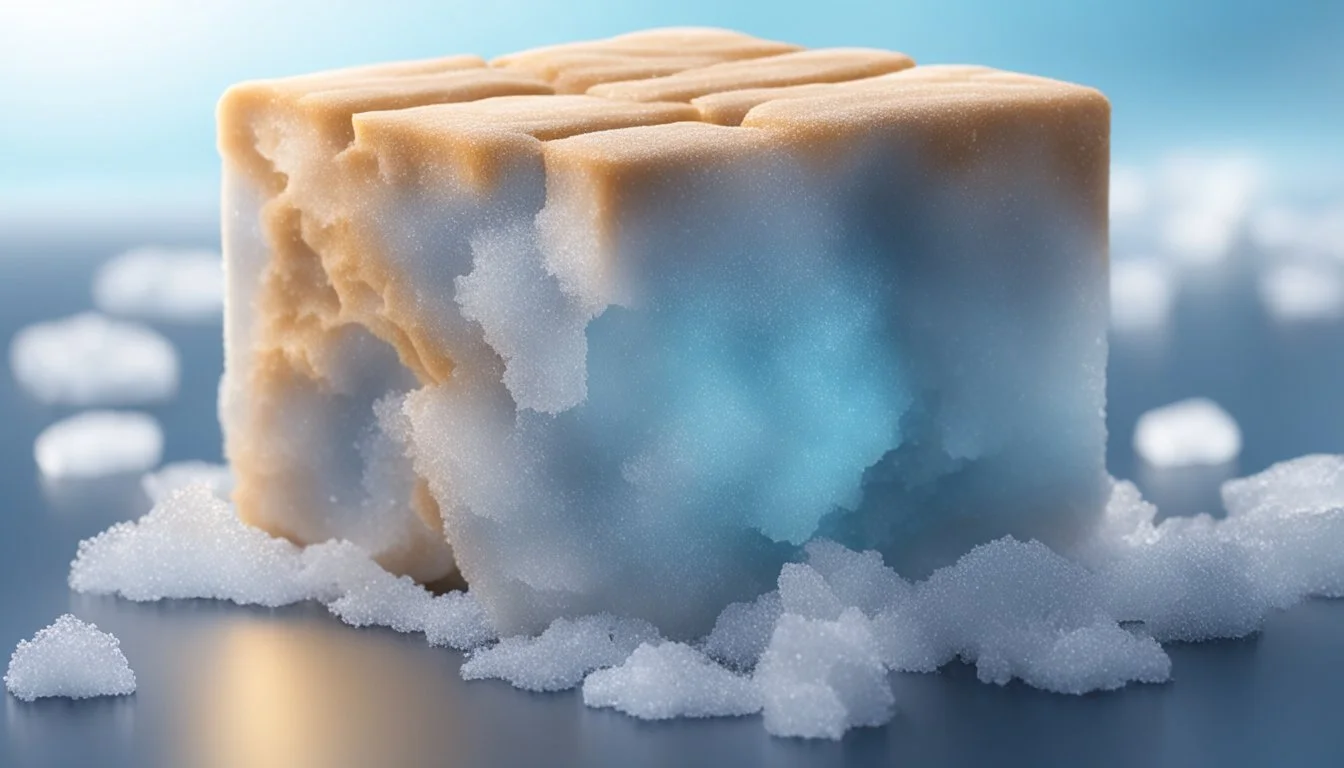How Long Does Seitan Last?
Shelf Life and Storage Tips
Seitan, (What wine goes well with seitan?) the plant-based protein derived from wheat gluten, is a popular choice for vegans and vegetarians due to its meaty texture and versatility in recipes. Understanding the longevity of seitan is crucial for those who incorporate this protein into their diets. Generally, when stored correctly, homemade seitan lasts about 7 to 10 days in the refrigerator. The key to preserving its freshness is to keep it in an airtight container, which minimizes exposure to air and moisture that can lead to spoilage.
On the other hand, store-bought seitan comes with a designated expiration date, which consumers should respect to ensure safety and quality. Moreover, seitan should be stored at a consistent and cool temperature between 32°F and 40°F (0°C and 4°C), which is typically the standard refrigerator temperature, to prevent bacterial growth and extend its shelf life. These procedures are vital as seitan is a high-protein and high-moisture food, making it susceptible to bacteria and mold if not handled and stored correctly.
Understanding Seitan
Seitan has gained prominence as a protein-rich meat alternative especially favored in vegan and vegetarian diets. This section delves into its composition, nutritional value, and culinary flexibility.
What is Seitan?
Seitan is a popular vegan protein made from gluten, the main protein found in wheat. It is produced by washing wheat flour dough with water to remove the starch, leaving behind a sticky mass of gluten which is then cooked. Known widely as wheat gluten, seitan has a meaty texture and is often used as a plant-based protein substitute.
Nutritional Profile
This vegan protein source is high in protein and contains a modest amount of iron. However, due to its wheat-based origin, it is not suitable for those with celiac disease or gluten sensitivity. The nutritional content of seitan can vary, especially when additional ingredients like chickpea flour are incorporated to enhance flavor and nutritional value.
Protein: Seitan is exceptionally high in protein, making it a staple in many plant-based diets.
Iron: It provides a source of iron, although not as high as in some other meat substitutes.
Gluten: As it is essentially pure gluten, it is not advisable for those with gluten-related disorders.
Versatility in Cooking
Seitan's versatility makes it a valuable component in various culinary applications. Its dense, meat-like texture allows it to absorb flavors well, making it ideal for a range of seasonings and cooking methods, whether it’s sautéed, grilled, or baked. Seitan can mimic the texture of poultry, beef, and pork, and can be used in a variety of dishes from stir-fries to stews.
Texture: By adjusting the kneading time, seitan's texture can vary from tender to chewy.
Flavor: It readily takes on flavors from marinades and cooking methods.
Uses: Seitan is adaptable in recipes traditionally calling for meat.
Proper Storage Methods
Storing seitan properly is crucial to maintaining its freshness and preventing spoilage. Utilizing correct refrigeration techniques and freezing methods can significantly extend seitan's shelf life.
Refrigeration Techniques
When refrigerating seitan, it should be stored at a consistent and cool temperature, typically between 32°F and 40°F (0°C and 4°C). These conditions slow down bacterial growth and maintain the product's quality. To refrigerate seitan:
Use an airtight container: Place the seitan in an airtight container to prevent it from drying out and absorbing unwanted odors or flavors.
Store in broth or marinade: If homemade, submerging seitan in broth can keep it moist and flavorful.
Check the appliance's temperature: Regularly monitor the refrigerator's temperature with a thermometer to ensure it stays within the optimal range.
Homemade seitan should last 7 to 10 days in the refrigerator, while store-bought seitan's shelf life can vary but should be adhered to as per the "use by" date on the packaging.
Freezing for Longevity
For those looking to keep seitan for an extended period, freezing is an effective method to preserve its texture and taste beyond refrigeration limits. Before freezing seitan:
Wrap securely: Encase the seitan in cling film, vacuum sealer, or a freezer bag to protect against freezer burn and moisture.
Label and date: Mark the packaging with the current date to keep track of how long the seitan has been frozen.
Seitan stored in the freezer can last for up to 6 months while maintaining quality. When ready to use, one should thaw the seitan in the refrigerator to ensure a gradual temperature change, reducing the risk of bacterial growth.
Shelf Life Considerations
Understanding the shelf life of seitan is essential for maintaining its freshness and preventing foodborne illness. Proper storage methods can significantly influence how long seitan remains edible.
Freshness and Expiration
For store-bought seitan, consumers should always check the expiration date on the label to determine freshness. Generally, pre-made seitan has a refrigerated shelf life of 7 to 10 days after opening, provided it's kept in an airtight container. Homemade seitan typically lacks preservatives, making its lifespan shorter than commercial varieties. To maximize freshness, homemade seitan should be consumed within 5 to 7 days when stored properly in the refrigerator.
Signs of Spoilage
Identifying spoilage in seitan is crucial to food safety. The following signs indicate that seitan has gone bad and should be discarded:
Change in Color: Any discoloration or darkening might suggest spoilage.
Mold Growth: Visible mold is an unmistakable sign that seitan is no longer safe to consume.
Odor: A sour or off smell is a strong indicator that seitan has expired.
It's imperative to regularly inspect seitan for these signs, as consuming spoiled seitan can lead to food poisoning.
Preparation and Usage
When preparing seitan, the cook's technique influences the final texture and flavor, impacting its meaty or chewy characteristics. Correct preparation ensures a delicious vegan alternative that's versatile in recipes.
Cooking Guidelines
Seitan can be cooked using various methods, each imparting a different texture to this plant-based protein. One common technique involves simmering the seitan in a flavorful broth, which can infuse it with savory tastes and is suitable for achieving a chewy texture. For a firmer and crustier exterior, grilling or baking is ideal. When grilling, seitan should be sliced or portioned appropriately and can be marinated beforehand to enhance its flavors. Boiling is another method, often used initially during the preparation of homemade seitan to set its shape before applying other cooking techniques.
Simmering Guidelines:
Simmer in broth for about 1 hour.
Ensure the broth is flavorful as it imparts taste to the seitan.
Grilling/Baking Guidelines:
Marinate the seitan for at least 30 minutes before grilling or baking.
Grill or bake until the seitan has a golden-brown exterior.
Recipe Ideas
Seitan's versatility in vegan and vegetarian cuisine allows it to be included in a wide array of recipes. It can be used as a meat substitute in sandwiches, where it's often sliced thin for a tender bite, or in stir-fries, chopped into bite-sized pieces for a quick and savory meal. Traditional dishes that normally require meat can make use of seitan to replicate the expected meaty texture, such as in vegan stews or curries.
Sample Seitan Recipes:
Seitan Stir-Fry: Quick sauté with vegetables and a savory sauce.
Vegan BBQ Seitan: Thick slices marinated and grilled for a smoky flavor.
Seitan Curry: Chunks of seitan simmered in a rich spiced gravy.
Remember to prepare seitan in portion sizes that are appropriate for the intended recipe, which ensures even cooking and optimal flavor distribution.
Freezing Techniques
When it comes to extending the shelf life of seitan, freezing is an effective method. Seitan can be stored in the freezer, maintaining its quality for up to six months. Proper freezing techniques can prevent freezer burn and maintain the integrity of the seitan's texture.
How to Freeze Seitan
To freeze seitan, one should first allow the seitan to cool completely after cooking. It can be portioned into desired sizes, making it more convenient for future use. Wrapping the pieces tightly in plastic wrap, followed by aluminum foil or placing them into airtight freezer bags, helps prevent freezer burn. One can also freeze seitan in a broth to help retain its moisture. If opting to freeze raw seitan, it’s recommended to shape and portion the seitan before freezing, similarly protecting it from exposure to air. Here are the steps:
Allow seitan to cool after cooking or prepare raw seitan portions.
Wrap tightly in plastic or aluminum foil, or place in freezer bags, removing as much air as possible.
Label with the date to keep track of how long it’s been stored.
Place in the coldest part of the freezer.
A tip for those who freeze dry seitan: ensure it is well-dried before storing to prevent ice crystals that may affect texture.
Thawing and Reheating
To thaw frozen seitan, transfer it from the freezer to the refrigerator and allow it to defrost slowly; this helps maintain its texture and food safety. For quicker thawing, seitan can be placed in a sealed bag and submerged in cold water, changing the water every 30 minutes. It’s important to avoid using hot water or microwaving for thawing, as uneven heating can lead to a rubbery texture.
Once thawed, reheat seitan by:
Sautéing in a pan until it’s warmed through.
Baking in an oven preheated to a moderate temperature until hot.
It is worth noting that the texture may change slightly once frozen food like seitan is thawed, with some people finding it chewier, which can be preferred in certain dishes.
Health and Dietary Information
When considering the health and dietary aspects of seitan, two crucial factors are its role as a protein source and its allergenic potential. Understanding these can help individuals assess seitan's fit within their dietary needs.
Seitan as a Protein Source
Seitan is a popular plant-based protein, making it a common choice for vegetarians and vegans seeking alternatives to animal products. It is made from vital wheat gluten, which contains a high level of protein comparable to certain meats. Typically, a 3-ounce serving of seitan can provide about 15 to 21 grams of protein, making it a substantial part of a protein-rich diet. Its texture is meat-like, which is why it's frequently used in vegan and vegetarian dishes (What wine goes well with vegetarian dishes?) as a meat substitute. However, one should consider the nutritional balance of their entire diet, as seitan does not provide a complete protein profile like some animal products do.
Allergy and Intolerance
Although seitan is a healthy alternative for many, individuals with celiac disease or gluten intolerance should avoid it, as it is derived from wheat. Those with wheat allergies or gluten sensitivities may experience reactions ranging from mild discomfort to severe gastrointestinal upset and immune responses. It's also important to note that seitan does not typically offer the full array of essential amino acids found in some other proteins, which means it should be paired with other protein sources for a complete amino acid profile. Individuals with allergies to wheat or gluten should seek other plant-based proteins like beans, legumes, or soy products to fulfill their dietary protein needs.
Impact on Taste and Texture
The longevity of seitan has crucial implications on its taste and texture, which are pivotal to its enjoyment. Appropriate storage not only extends its shelf life but also maintains its desirable sensory qualities.
Influence of Storage
Seitan's taste and texture are significantly affected by how it is stored. Refrigeration is essential; seitan should be kept in a cold environment to retain its optimal flavor. When stored properly in the refrigerator, seitan maintains its freshness and taste for several days. Improper storage can result in a decline of seitan's inherent savory qualities and lead to a texture that may become undesirable over time.
When stored in a broth or flavorful liquid, seitan can absorb these tastes, enhancing its own flavor profile. It's important that seitan is kept in an airtight container to prevent drying out and to minimize exposure to bacteria, which can adversely affect its taste and lead to spoilage.
Effect of Freezing on Quality
Freezing seitan is an option for long-term storage, though the quality, particularly texture, may be affected.
Before Freezing:
Seitan should be wrapped securely to avoid freezer burn.
For optimal flavor retention, one can freeze seitan in a marinade or seasoned broth.
After Freezing:
Upon thawing, seitan's texture may be slightly altered — it can become chewier or denser.
Freezing can cause seitan to lose some of its ability to absorb flavors, potentially making it less delectable when marinated after being frozen.
It is important to note that the changes in taste and texture due to freezing are not uniform and can vary based on initial preparation and freezing methods.
Culinary Creativity with Seitan
In exploring the culinary versatility of seitan, chefs and home cooks discover a canvas ripe for innovation. Both recipes and seasoning take center stage in transforming this meat substitute into a myriad of flavorful dishes.
Innovative Recipes
Seitan shines in its ability to adapt to a range of recipes, offering a texture reminiscent of meat that is appreciated among vegetarians and meat-eaters alike. Here are some specific ways seitan can be used:
Burgers and Sandwiches: Seitan's dense texture makes for satisfying burgers and sandwich fillings.
Stir-Fries: Cut into thin strips, seitan can mimic beef or chicken in savory stir-fries.
Grilled: Seitan steaks marinated and grilled create a robust option for barbecue enthusiasts.
Additionally, seitan doesn’t falter when compared to tofu, another popular vegetarian option, as it provides a more meat-like texture, often referred to as "wheat meat."
Seasoning and Spices
The neutral taste of seitan makes it a perfect base to carry a variety of spices and seasoning.
Savory Dishes: A combination of garlic, paprika, cumin, and soy sauce can infuse seitan with a deep, savory flavor.
Herbaceous Notes: For a lighter touch, herbs like thyme, rosemary, and sage can impart a fresh profile.
Through the clever use of spices and innovative recipes, culinary enthusiasts are able to extend the appeal of seitan well beyond the vegetarian sphere to please a wide array of palates.
Cultural and Historical Context
Seitan has a significant place in culinary history as a traditional meat substitute. It is deeply rooted in cultural practices, especially within vegetarian communities.
Origins of Seitan
Seitan originated in East Asia, with its beginnings traced back to China. Historically, it is a creation attributed to Chinese Buddhist monks who sought sustenance that aligned with their vegetarian lifestyles. Known as wheat gluten, seitan provided an organic protein source made from wheat, which integrated seamlessly into their diets. The method involved in seitan's creation—washing wheat flour dough with water to separate the starch from the gluten—stands testament to the culinary ingenuity of ancient cultures.
Global Adoption
The global spread of seitan began as it made its way from China to other parts of Asia, and eventually, its popularity surged in the West with the rise of vegetarianism and veganism. In Japan, it is known as fu and is used in a variety of dishes. The adoption of seitan across different cultures showcases its versatility and the recognition of its benefits as a plant-based protein. It has been embraced by vegan communities worldwide who appreciate seitan's meat-like texture and its capacity to absorb a vast array of flavors, making it a staple in diverse cultural cuisines.











